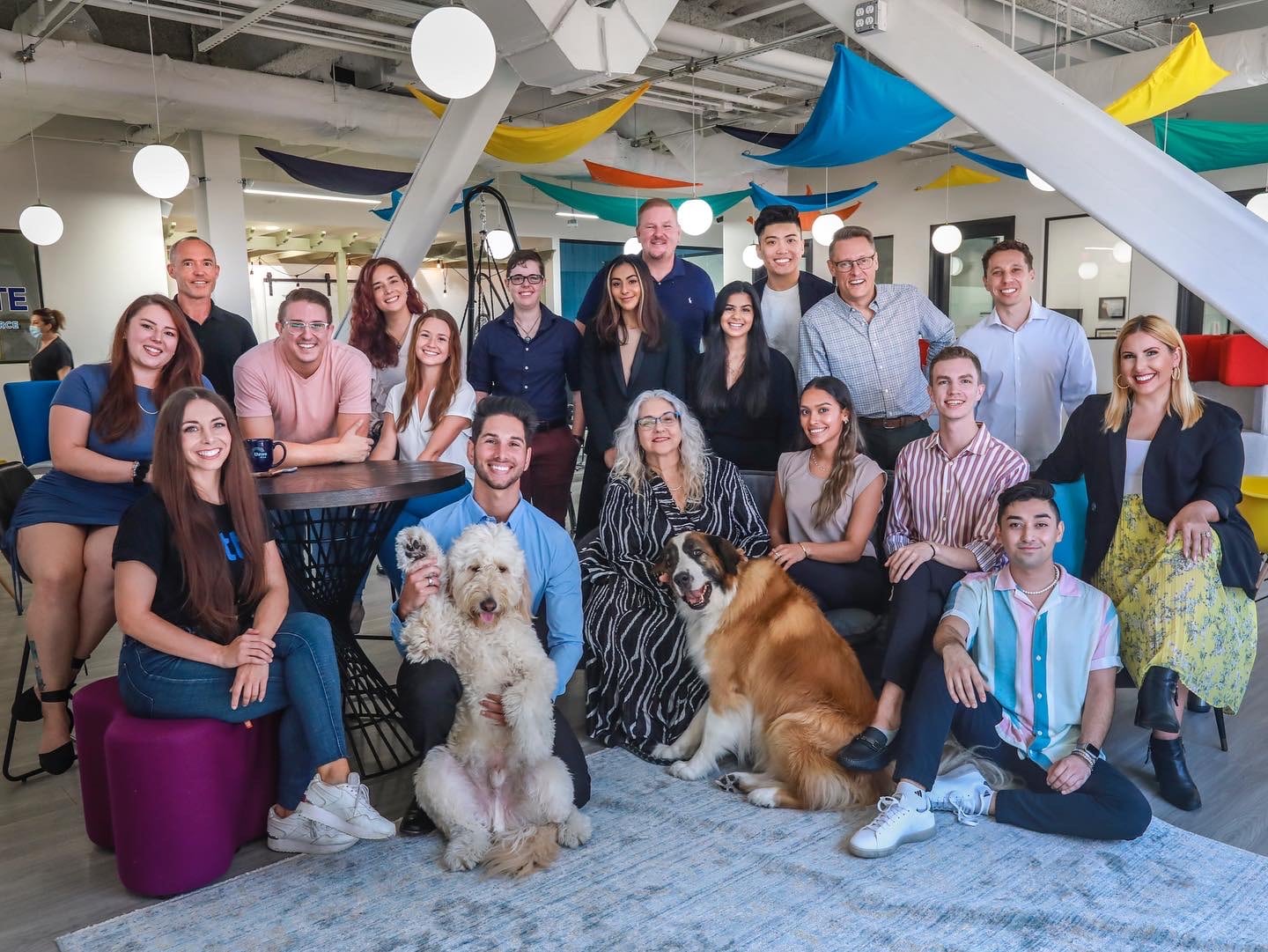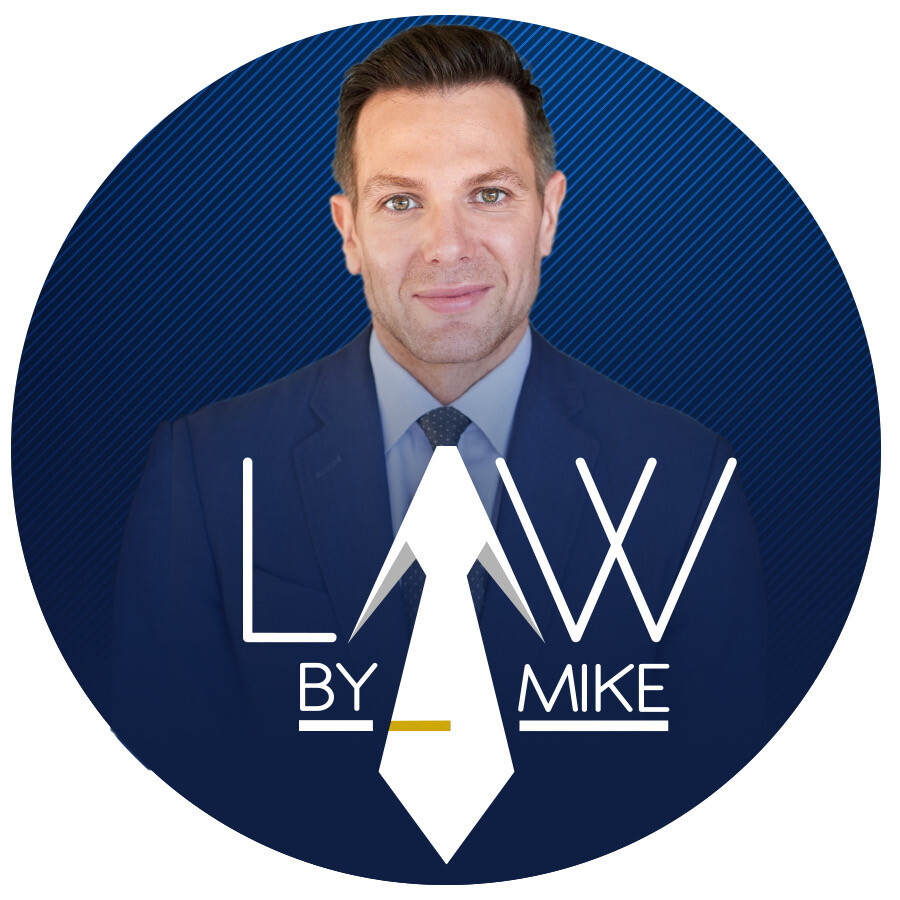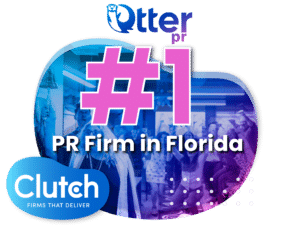You have a great product. You have built a great brand around it. You have a great team. But your business is not flourishing. You are spending what you should be spending on marketing, but your competition is winning. You need something new to give you an edge. You need to increase brand awareness. You need a public relations strategy.
If you are not a PR professional, you may find PR to be a little mysterious. Google “what is PR?” or “what is public relations?” and you are likely to get results that talk about backlinks, keywords, domain authority, earned media, and digital PR, none of which makes sense to you. You are fairly certain that press releases are somehow involved, but you are not sure how they relate to your brand or how to get them into the right hands. In general, getting media coverage that will connect with your target audience seems like an overwhelming task.
If that is how you feel, we can help. Whether your goal is traditional PR or digital PR, this ultimate guide to public relations in 2022 will set you on the right course. Read through and you will learn how to leverage a public relations campaign to grow your brand.
What is a PR strategy?
Let’s start by giving a definition of public relations, then we will move on to talk about strategies. PR is a tool that organizations use to guide public perception about their brand. It leverages the authority of media outlets to grow a brand’s public reputation. Overall, it helps a brand to build trust with its target audience.
A PR strategy is the plan that you employ to achieve positive media coverage. Let’s be honest: media coverage is not difficult to achieve in 2022. One wrong tweet can land you on the front page of a host of online media outlets. The key is getting positive media coverage that helps your brand. The goal is controlling what is said about you in the press. That is what a PR strategy can accomplish.
What is the difference between PR and marketing?
At this point, you may be wondering how public relations and marketing are different. Don’t they achieve the same things? Aren’t they both tools for increasing brand awareness? Isn’t marketing a lot easier than PR? To answer your questions, yes, they both increase brand awareness and, yes, marketing efforts can be easier than public relations efforts. However, marketing and PR do not achieve the same thing.
Think about marketing for a minute. Marketing materials, at their core, are advertisements. They tell your audience exactly what you want them to hear. They are your words about your product with no third-party affirming or endorsing. Basically, it is like a product review that you write yourself. And potential customers know that, which is why they often view ads with a certain degree of skepticism.
Public relations adds another element to your promotion. In essence, it borrows the authority of the media outlet. It is like a stamp of approval from a neutral third party. It is like a referral from a trusted source.
Let me explain further with an illustration from the world of social media. When your brand posts something about your product through its social media account – whether it is Instagram, TikTok, Twitter, or something else – that is marketing. It is you saying what you want to say about your product. It is what is known as owned media (which we will talk more about later). It is valuable, but its impact will be limited because it is you promoting your own brand.
Now think about what happens when your post starts to get some social shares. Suddenly, they carry more weight on the platform. It is not just you talking about your brand; it is other people talking positively about your brand. In essence, the person who shares is telling his or her audience that you can be trusted to deliver what you promise.
The value of social shares is seen clearly in the rise of influencer marketing. While influencer marketing is not PR, it is close. The difference is you are paying the influencer to say what you want them to say. With PR, the media becomes your influencer, sharing your story with their readers and boosting your authority and credibility.
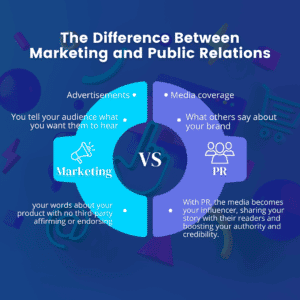
How do you define good PR strategies and tactics?
Building a solid strategy involves deciding where you want to go and how you are going to get there. Set measurable goals with metrics you can track. Do you want to increase the number of clients that you are serving? Do you want to increase the number of conversions on your ecommerce site? Do you want to increase website traffic? Do you want to establish yourself as a thought leader in your field? Do you want your backlink efforts to be more successful? Until you define your goals, you cannot develop a strategy to achieve them.
Once you establish a measurable goal, you can zero in on the tools you can use to pursue that goal through earning media coverage. Successful PR can be achieved through any number of avenues – from social media engagement and media mentions to influencer outreach and earned media. Establishing your goals will help to define the market you want to reach and the message that you want to share. From there you can determine the most effective pathway.
The most effective strategy will also be responsive. It will go beyond planning and launching to provide ongoing assessments and, when necessary, modifications. If you have set PR goals, you will have analytics at your disposal to help you measure the strategy’s effectiveness.
What is the key to successful public relations?
At this point, you may be thinking that successful public relations is something that you do not have the time for. And you may be correct. But that does not mean it is not an important investment to make in your brand, especially if you find your brand is not profitable. If you value building a positive brand reputation, then you should consider enlisting the services of a professional PR team.
The key to successful public relations is consistently getting the right story about your brand into the right hands at the right time. The expertise that public relations professionals can bring to your business helps you to achieve that consistently.
A PR firm understands the best and most efficient route for you to reach your PR objectives. They know what PR efforts can be used to achieve PR success. They understand what is happening in the news and how it can help to promote your brand. They have relationships with journalists that can open doors for your story to get out. They know how to pitch the messages you want to communicate. They know how to manage your media relations. Overall, a professional PR team knows the best strategies for promoting awareness of your brand.
Regardless of whether you plan to be your own public relations team or hire professionals to get more people talking about your brand, you’ll want to keep reading to understand the types of public relations efforts and PR tactics that will be most effective.
What is a PR campaign?
As you develop your long-term strategy, you may define a number of short-germ goals when it comes to the messages you want to share and the media channels you want to use. Each of those short-term goals will be accomplished through separate PR campaigns.
Basically, a public relations campaign will include a series of PR activities designed to get a particular message about your brand to achieve significant media exposure. The PR campaign may start with a press release that informs the media en masse about an exciting development at your organization. From there it may zero in on a target audience by focusing on specific publications or news shows. In general, the goal will be to build excitement around your brand and promote your business’s reputation.
It will be important to keep in mind that a sound strategy will utilize a number of PR campaigns to open doors to more valuable media coverage. You should not expect to achieve top-tier exposure for your brand in the early days of your PR efforts. If you want to see your brand featured in Forbes, The Wall Street Journal, or Good Morning America, you will need to start off in much smaller publications. As you start to achieve online mentions, you grow your credibility and create opportunities with more influential media outlets. The more coverage you get, the more outlets will want to cover you. PR isn’t for the impatient.
What is the difference between traditional PR and digital PR?
Traditional PR is usually thought of as involving outlets that are purely offline. This can include magazines, newspapers, TV programs, and radio shows. Generally speaking, if you are not accessing it through a web browser or app, it is traditional PR.
The growth of the internet opened the doors for a wide range of other PR opportunities known as digital PR. Online magazines that do not have a print equivalent are often the target of digital PR campaigns. While achieving digital PR success may not sound as exciting as appearing on the evening news, it does have some powerful benefits.
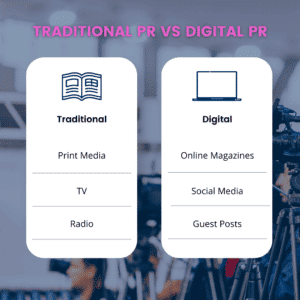
How can digital PR campaigns can boost your SEO?
Much of the online world is ruled by search engines. When someone is looking for the best brand in your field, they will find what the search engine wants them to find. When you achieve success with digital PR campaigns, you make your brand more findable because you are leveraging search engine optimization, or SEO.
Here is a quick explanation to help you better understand how SEO works. Google and other search engines want to provide the most helpful search results. They evaluate all of the potential results and sort them based on which receive the best traffic. The quality of the information on your website is not important to a search engine if it is not attracting a lot of traffic.
A digital PR campaign aims to have your brand featured in a digital publication. As people read about your brand or learn from your expertise, they often are given the opportunity to click through to your website to learn more about you or to get even more help. Every click through increases traffic, which means better SEO for you. As you appear in more and more digital outlets, the potential for traffic to your site grows exponentially. As your traffic grows, search engines will push you farther and farther toward the top of search results. Traditional media does not hold the same potential for growing your online credibility.
How important is link building for PR in 2022?
If you are exploring digital strategies, you will probably find some information on link building. Basically, this is a component of SEO that can be accomplished through a solid digital PR strategy. The links that are built through this process are known as backlinks. They are links on another organization’s website that link back to your brand’s site.
If your PR campaign results in you having guest articles published in a media outlet, your byline will typically include a backlink to your brand’s website. If you are quoted as an expert in an article, this will also create a backlink opportunity. A press release announcing an exciting new hire will include a backlink. A feature article that talks about your products or services will definitely include a backlink. Basically, backlinks ensure that anyone who connects with the news also connects with your brand.
Each backlink not only provides more pathways for people to find you, thus providing more opportunities for increased traffic, but also creates more healthy connections for your page. As your page’s domain authority is assessed, each backlink boosts your score. Because of the high value placed on SEO in 2022, link building is definitely an important goal of PR.
Is achieving earned media an important PR tactic?
No PR guide would be complete without explaining the four different types of media – paid media, earned media, shared media, and owned media. Each has its place in your overall strategy for promoting your brand. An overview of these will help you to understand why PR can be such a valuable tool for building trust with your audience.
Owned media is the easiest of the four types of media to obtain. It is media that you have produced and shared without needing anyone’s permission. A page on your website or a post on your Instagram feed is owned media. Paid media is a close second to owned media in terms of the ease with which you can obtain it. Like owned media, paid media is something that you control. The difference is that you pay to have it placed. Basically, paid media is an ad.
Earned media is media that features you, but that is prepared and promoted by others. Earned media is the hardest type of media to achieve. It cannot be bought and it is not under your control. Examples of earned media include media that quotes you as an expert on a topic, features your product on a list of great gifts, or tells the story of the positive impact that your brand is having in its industry or community. It is one of the most effective forms of media for building credibility because it is easier for people to trust the information they find in earned media. If you have a goal of building a positive reputation for your brand, you will want to work to obtain plenty of earned media.
Shared media is media that starts off as one of the other three types of media. It becomes shared media when someone other than your organization picks it up and shares it. A social media post that is shared by one of your followers is a great example of this. If you want an easy way of boosting your brand’s credibility, make sure that you are sharing shared media. In other words, when a fan takes the time to promote you by sharing your media, capture it and feature it on your website or social channels. Also, share your earned media. Collect any coverage, repackage it, and celebrate it on all of your social media channels.
Are PR KPIs important for achieving your PR objectives?
Seeing your brand featured in the media, whether it is a traditional or digital outlet, is exciting. But that is not the goal of PR. Remember that a successful PR strategy starts out with establishing goals. If your media exposure is not accomplishing your goals, it will be hard to justify the resources, regardless of how wonderful being featured feels.
To make sure that you are moving toward your goals, you may want to consider establishing some key performance indicators. These can include the coverage that you have achieved, with sub-KPIs focused on the domain authority of each media outlet in which you have appeared. It also can include the potential reach of each of your media wins and the share of voice, which is a measure of how your coverage compares with what others in your industry are achieving.
Tracking KPIs can help you to know what is driving the success that you are achieving so that you can know how to duplicate it moving forward. Remember, a PR strategy helps you to increase your brand’s credibility and propel its growth. There are many types of PR that can be leveraged to achieve those goals. Determining which type work best for you will ensure that you can achieve your goals effectively and efficiently.


